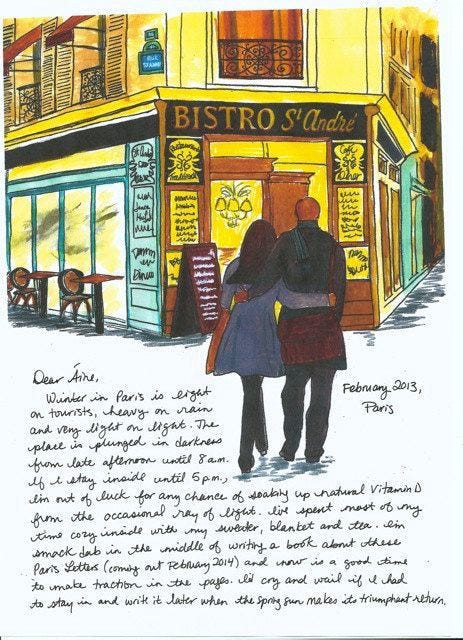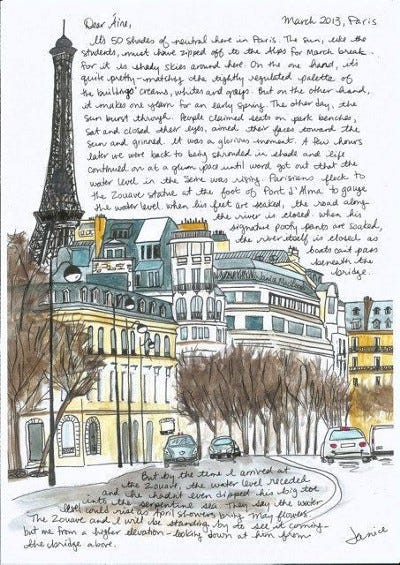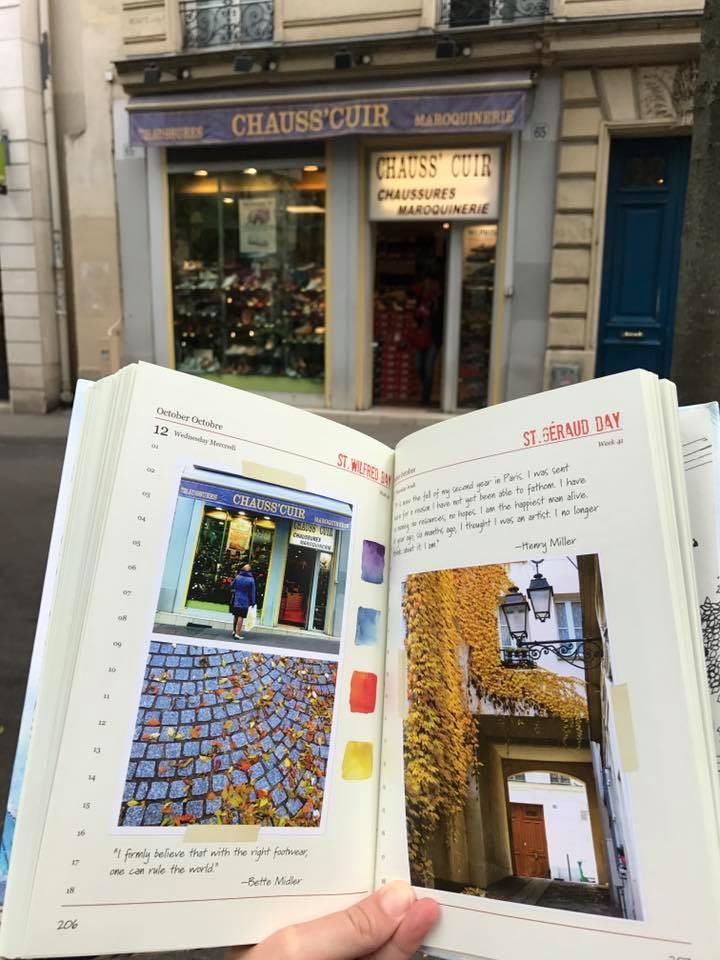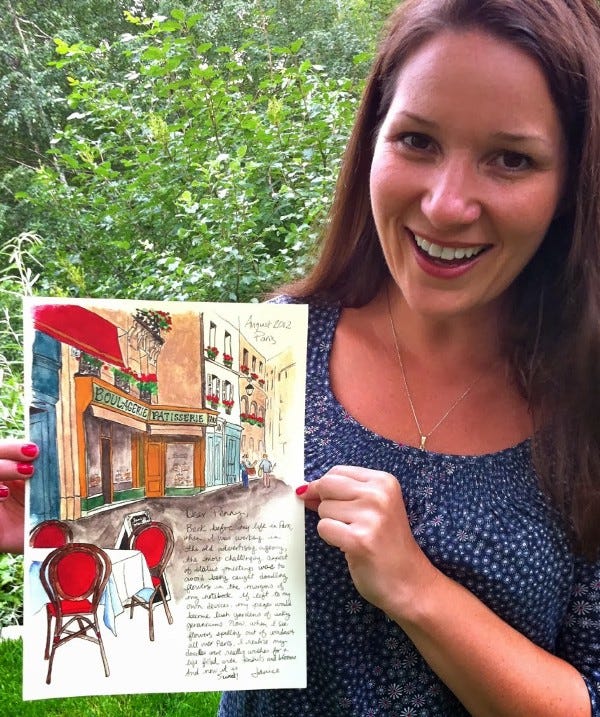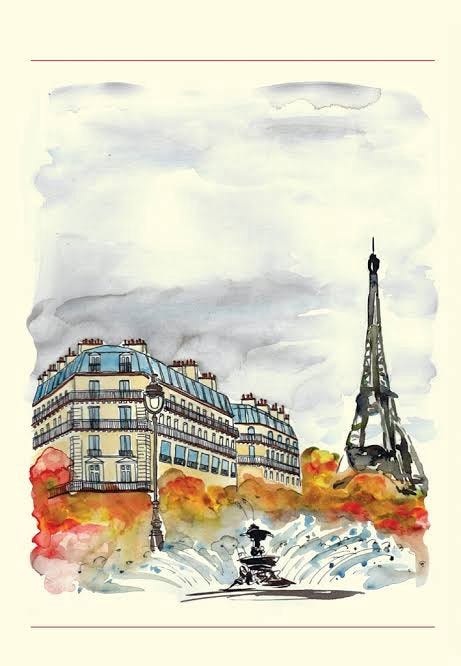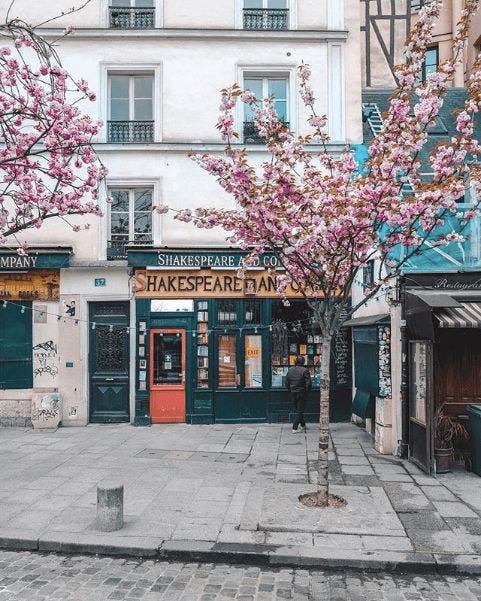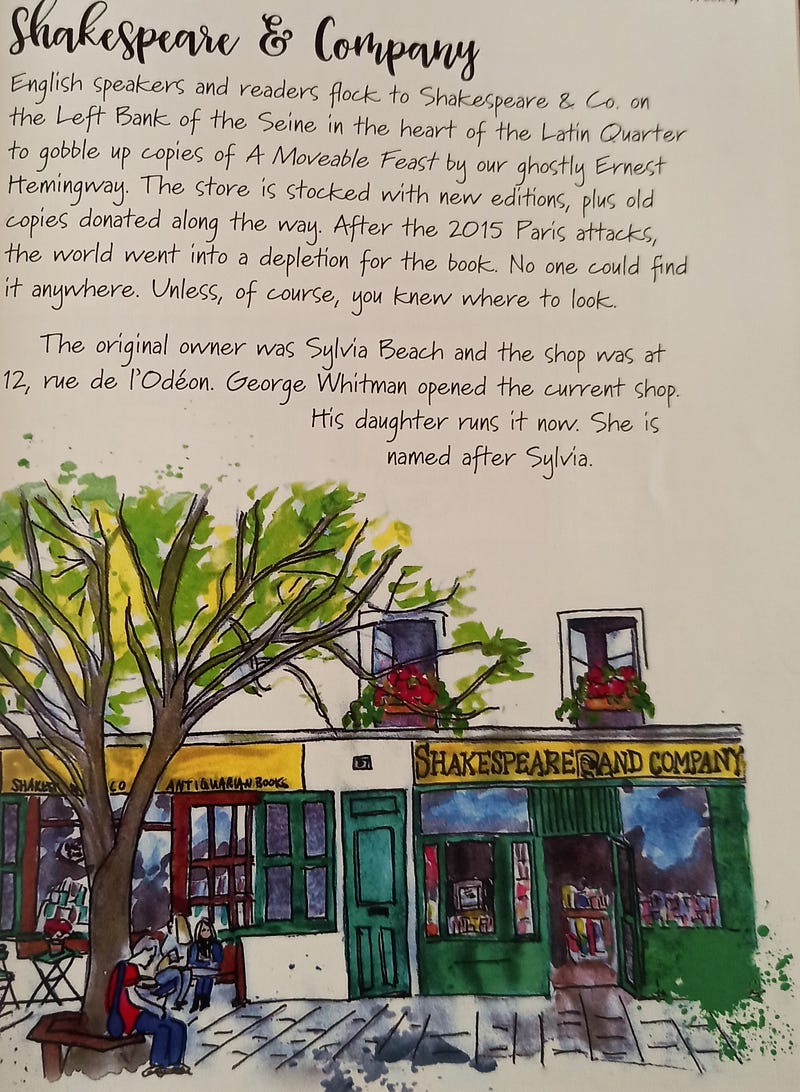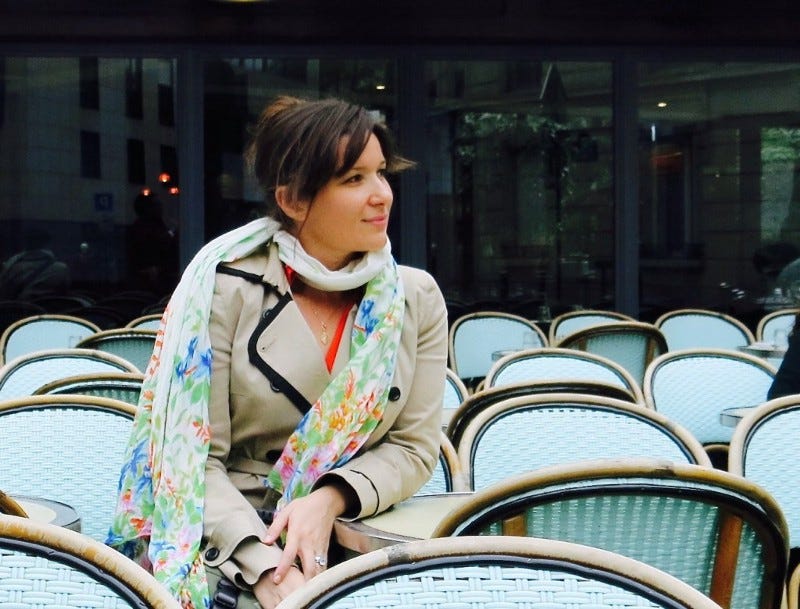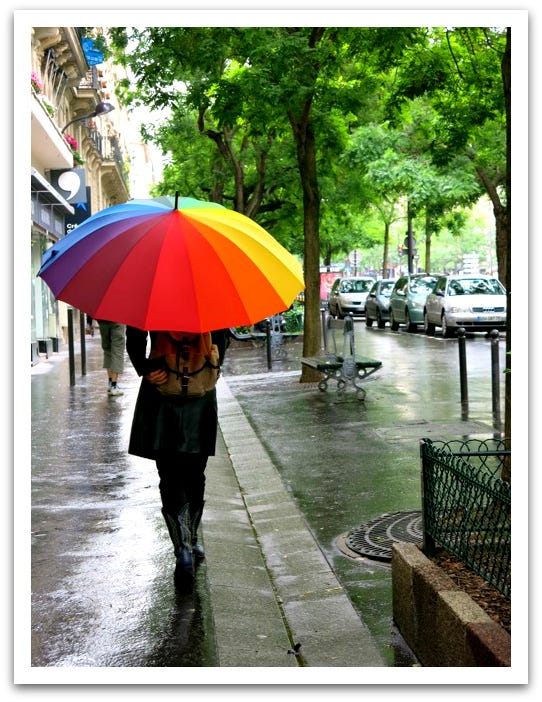Paris Letters: An Interview With Janice MacLeod
Ever wanted to leave your mundane job and do something which makes you happy to your core? That’s the dream for countless many of us and…
JANICE MACLEOD turned her back on a copywriting career in California to TRAVEL and find herself. In Paris she found a whole lot more — HAPPINESS, love and a UNIQUE business based on one of the oldest forms of COMMUNICATION: letter writing.
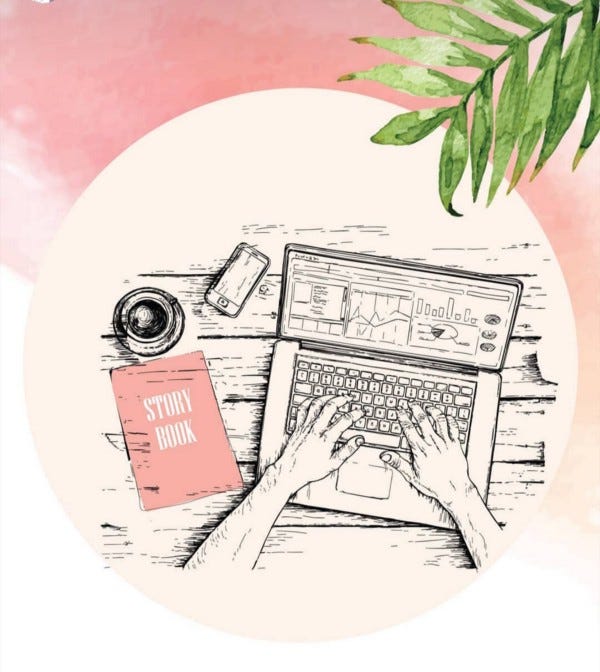
Ever wanted to leave your mundane job and do something which makes you happy to your core? That’s the dream for countless many of us and Janice MacLeod’s “Paris Letters” is not only a way to escape from the daily slog of corporate lifestyle, but it’s also an encouragement and enticement to actually do it yourself.
By education, Janice MacLeod has a graduate degree in Arts majoring in English Literature , Communication and Media Studies from University of Waterloo and Master’s degree in Spiritual Psychology from University of Santa Monica. She also did a coursework from Humber College in the area of Media Copywriting. She has a rich 15 years of advertising experience as a Senior Copywriter or Associate Creative Director with major iconic brands like Leo Burnett , Brierley & Partners , Grey Advertising , Wunderman Toronto , Young & Rubicam Brands and The Kern Organization.
Her story begins with a single baggage in hand, when she decides to leave her corporate career and moves to Europe and shares her personal journey in this memoir, Paris Letters.
34 and single Janice realised that despite her above average and successful career in an advertising firm providing her a contended lifestyle, she was quite unsatisfied with her life. In 2010 inspired by The Artist’s Way written by Julie Cameron and a push from a colleague , Janice began strategizing plans to rediscover her life. She began by writing blogs every day and devising strategies to save some dollars a day to manage her long term expenses. A year later she put down her papers and took off to explore Europe.

Paris Letters captures Janice MacLeod’s voyage which includes short treks through Scotland and Italy before she decides to settle in France. Having found happiness but needing a way to fund her extended stay in Paris, she takes inspiration from artist Percy Kelly and his illustrated letters to his accumulated penpal. Utilising an ETSY store front she begins creating and selling letters adorned with her watercolour visuals of Paris scenery which quickly accumlated over 1,000 subscribers. By the end of 2012, Janice lands up a book deal and is living her dream.
The memoir is written as though to a best friend , telling her tales over a cup of coffee — (or she quotes “café crème”).
Relatable and full of hope , MacLeod makes (following your vision) look like a cakewalk. While the story is depicted with places of humility, it is crafted with wit and unexpected wisdom.From numerous points of view this is an uplifting memoir of a woman who has completely changed her life for the better. Certainly, the reason appears as though out of some romantic lighthearted comedy movie where everyone gets a happy ending. But it is not like that , once people will read her work they will realize and understand how raw and human she is , just like any of us. Following a dream isn’t simple like a cake-walk or great or perfect like Hermione Granger reading skills, however it’s an adventure we all deserve.
Paris is a great walking city. You can walk for a few hours and see bits of history from each century, plus experience the craftsmanship of today’s artists.
It truly is a moveable feast. There is no other city in the world like it. You can’t ever truly go home after living in Paris because every place, including where you came from, gets compared to Paris, which has no equal — Janice
Without further ado let’s talk to the author and try to know her journey even better. :)
Q1) I read Paris Letters when I was myself going through an existential crisis. The second I finished your book, I knew I’d be taking some time off from work and from everything so that I could introspect and decide what would make me happy. How often do you hear tales like this from your subscribers or your readers?
Janice : It’s definitely a common theme, for which I’m delighted and amazed. I’m so proud of people that decided to take action in their own lives after reading Paris Letters. Some people have concocted escape plans from corporate life, others take action to save up for a dream vacation, others like yourself who knew you needed to take time off work in order to have the space to imagine what would make you happier. Paris Letters, it seems, has become a permission slip to start creating a more satisfying life. It’s also a romance set in Paris, but I love that it has become so much more to people.
Q2) Can you tell me a bit about your writing process, from start to finish? What stages were involved in writing Paris Letters/A Paris Year? How did you manage to build this highly curated mixed media journal. Each parchment from the book has its own art object! I’d love to hear how your vision turned into reality in aesthetic sense.
Janice : Each book started the same but then went in different directions. For Paris Letters, I started by writing daily in a journal. Whenever I came across a spark of an idea in my writing, I circled it, starred it, or called it out in some way. Later, I collected all these halfbaked ideas by ripping them out of the pages (I can hear a collective gasp… yes, I rip up and toss most journals). I organized the bits of paper and put ideas that would be written together in the same pile. These piles eventually became chapters or big sections of the book. I then took index cards and wrote bullet points on what will be happening in each of these chapters/piles. That became the “cover page” for each pile. When I had no more ideas or one pile was thick or it was raining a lot and I stayed inside, I started typing it up. I built a manuscript by typing these bits on their own pages in a document. Then kept adding ideas, adding flow, deleting boring bits, and rewriting. When I really had no ideas, I would work on my Thank You page or my Dedication page. There is always puttering to do in a manuscript. I puttered until it seemed done.
As for A Paris Year, this was an illustrated travel journal so it was a bit of a different animal from Paris Letters, which was a memoir of how I BECAME an artist in Paris. A Paris Year was more about BEING that artist in Paris. Like with Paris Letters, I had a pile of ripped paper but also paintings, sketches, little bits of Paris history, small stories about who I met and what I saw on the streets of Paris. One day I walked into the stationery area of Le Bon Marché Rive Gauche department store. I found a daybook that had the most lovely creamy pages, a deep amber leather cover, a perfect size and shape. I was mesmerized by the daybook, and delighted at all the little details. I wanted that daybook in a very bad way. So I bought it and started using it. I added a few paintings, sketches, notes, lists, nice stamps, pretty ephemera I came across. I thought it was such a nice way to express a time of life. So I returned to my other bits of paper and reorganized them in 12 piles, what would become a chapter for each month. The French are great at celebrating the months. There seems to be a color tone for each month, a dish to eat for each month, celebrations and important dates, foods that are in season. I took this idea and tried to express what each month of the year is like in Paris. It started as just an excuse to play with my new daybook. And it was done when I arrived at December 31st. So that was a nice finale. Then rather than a Word doc manuscript, I ramped up my graphic design skills to recreate final versions for the print book.
Q3) While going through your work I couldn’t help but notice that your writings were inspired by Ernest Hemingway and A Moveable Feast. “Paris is a city of ghosts and you note that Hemingway seemed to be aiding you along.” What do you feel Paris offers an individual as a writer — the most romantic city which is surrounded by super creative souls or individuals?
Janice : I think walking has a lot to do with being creative in Paris. Paris is a great walking city. You’re alone with your thoughts when you walk, and then your feet are tired so you sit at a café. If you pull out a journal and pen while you watch the show presented before you, you’re more likely to have a few creative ideas. Paris also honors artists, not just with museums and galleries, but with street names and plaques outside of buildings where famous artists lived. Seeing all this makes one feel that it might be possible to be an artist yourself.
Q4) Which is your most favourite part/illustration from the book “A Paris Year’’?
Janice : Impossible question. I guess what I like best is the collecting of things: Collecting photos with bright red as a focus, collecting stamps, collecting color tones, collecting Saints Days. It’s the collecting of themes I like best about A Paris Year.
Q5) What were your biggest insecurities when releasing your book into the world?
Janice : Reviews. It’s unfortunate to write in a world where autobots incessantly ask us to review whatever we bought online. It’s a challenge for an author to stay composed, hopeful and positive when a book comes out, knowing Sally in Virginia could completely ruin your day or damage you in some way with a bad review. So I’ve had to practice walking away from the review process and being still in the center of the teetertotter. I don’t read reviews, but I’m told there is a consistent 4.5 out of 5 stars. That’s enough to know. I don’t need to know the reasons behind that missing .5.
Q6) So, tell me a bit more about yourself! What are your hobbies and interests? What do you like to do in your leisure time?
Janice : Gardening. I finally made a few other non-Paris-related dreams come true. I have a house with a backyard where we planted fruit trees, vegetables and flowers. It’s small but mighty. Just today I found the perfect pot to go with my new geranium plant and in that moment, it was as satisfying as bigger dreams I made happen for myself. I finally got the flower/pot combination I’d been imagining for so long. It’s small but significant.
With daycares closed, my daughter is at home with me, so there isn’t as much leisure time. That said, I love working on my Etsy shop where I sell note cards and illustrated Paris Letters so when she was in daycare, I didn’t have much more leisure time. I just leaned into my art without the trill of little feet in the background or soundtrack of toddler tunes.
Q7) I am myself a bibliophile and bibliophagist. I have this dream of seeing and exploring all the bookstores of the world. Like the one in Paris near Notre Dame — An English bookstore known as Shakespeare and Co. When you were making the artwork of that particular bookstore, what was your source of inspiration? How did you feel when you first saw that writer’s haunt. Did it generate the magical and organic literary energy within you?
Janice : There is nothing quite like seeing an English language bookstore in a foreign language company. I walked into Shakespeare & Company a hundred times. It always felt like the soft familiarity of home. Just to be able to read the titles was a delight. And they have a used book section so sometimes you can find wonderful old books with writing in the margins. I’ve donated a few to the cause myself. That bookstore is a treasure.
Shakespeare & Company, Paris : An Interview with Sylvia Whitman
I had a wonderful & insightful conversation and Q&A session with Sylvia about Bookselling Business Ecosystem.medium.com
Q8) If you could back in time , and relive a memory that lingers or experience that you had in Paris , what would that be ?
Janice : Market day. Every Sunday I would go to Place Monge market with my friend Melanie and buy the veggies and flowers for the week. Then a coffee. Then back home to make lunch for Christophe who would arrive home after work and our weekend would begin. Very simple daily life memory but so very special.
Q9) Do you have any suggestions or pieces of advice for budding authors? Paris Letters deeply explores the idea of stepping out of your comfort zone and taking that leap in life. What advice would you give to someone who is stuck in a mundane job or business and wants to be a writer and is struggling to make that drastic life’s decision?
Janice : I started by writing in a journal. It takes no big investment in money, just a pen and paper. It does take planning to carve out a decent moment in the day to sit with a journal. Not only did I concoct all my escape plans in that little notebook, but learning how to carve out the time to write in it taught me how to manage my time better so that I could use those pockets of time to create a better life for myself.
Q10) If you could tell your younger writer self-anything, what would it be?
Janice : Shut off the TV.
In the end what we all can learn from Janice’s journey that how she analyzes each part of her life and chooses which parts of her life are better and which parts of her life require departure . She trims down her deep rooted belief systems of what achievement and bliss are. Janice finds a different life, and a new way to find happiness. That was my favorite thing about this book , how she ends up finding an alternate life, and another approach to discover satisfaction. She basically changes her desires, and continually moves herself to attempt new things and do things another way, and at long last she discovers an unexpected route to bliss.
Thank you all for reading and a big thanks to Janice MacLeod for collaborating in today’s post!
It’s a pleasure!
Website or Blog: http://janicemacleod.com/
ETSY Store : https://www.etsy.com/shop/janicemacleodstudio
Books: Paris Letters & A Paris Year http://janicemacleod.com/book/
Instagram : https://www.instagram.com/janicemacleodauthor/
Twitter : https://twitter.com/JaniceArtShip




